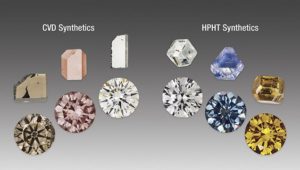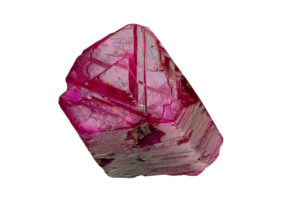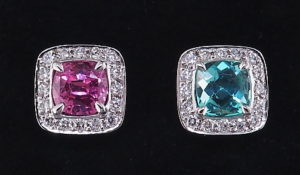What are Synthetic Diamonds?
A synthetic diamond is defined as a laboratory grown diamond that has the same physical and optical properties as a natural diamond. Synthetic diamonds can be grown in similar colours and clarity as a natural diamond and can be polished and are very difficult to detect. Under terminology guidelines in the UK can only be defined as synthetic, laboratory grown or laboratory created diamond.
Synthetic diamonds should not be confused with simulants stones which appear to resemble a diamond. Examples include Cubic Zirconia, Moissonite and white gemstones including Sapphire, Topaz and Quartz.
To understand synthesis, it is important to understand natural diamond types which contain impurities that create colour in diamond. There are two types of diamond 1a & 1b and 11a & 11b and all are composed of carbon with either nitrogen, hydrogen or boron impurities. Type 1a are aggregated with nitrogen and constitute 98% of all diamonds on the market. Type 1b are very rare with isolated nitrogen atoms. Type 11a are nitrogen free and either colourless or brown and are rare and 11b have blue boron impurities. Please see colours of synthetic diamond below.
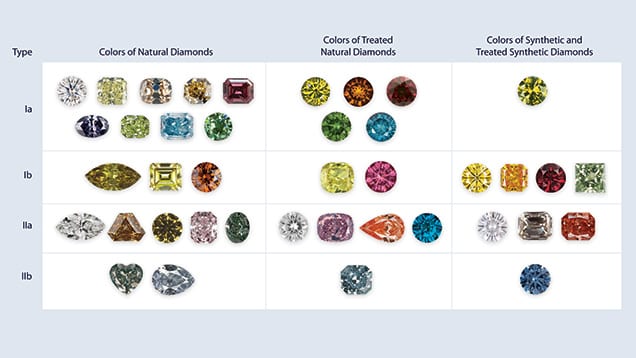
Image credit GIA.edu
Synthetic diamonds have been grown since the mid 19th century, formerly for industrial usage and for gem use over the last twenty five years. To date, the colours and types of synthetic diamonds include
the following:
Type 11a – near colourless, HPHT grown or CVD grown
Type 1a + 1b, 1b – yellow to orange, HPHT, rare CVD grown
Type 1b, 11a – pink to red, after annealing & irradiation, HPHT or CVD grown
Type 11b – blue, HPHT grown or CVD grown Type 11a
Two methods of production
There are two methods of production HPHT (High Pressure High Temperature) and CVD (Chemical Vapour Deposition). HPHT has been around since 1954 when General Electric and then De Beers synthesized diamonds for industrial purposes and it would only be a matter of time that colourless and fancy colour diamonds would be produced with a combination of High Temperature, Pressure and a Solvent Catalyst.
In short, HPHT mimics the natural process of diamond growth where carbon crystallises under intense heat and pressure within the earth’s mantle over a period of a billion years. HPHT can create a diamond within two weeks but at a cost, the high pressure high temperature chambers are costly and require huge energy to produce yellow and yellow brown cubo-octohedral diamonds. These diamonds will then be polished. See below.


Image credit: Graham Tom
Detection
HPHT synthetics are detectable with standard gemmological equipment including magnification and have a yellow or yellow brown colour or can be blue or near colourless which are harder to identify. Identification of HPHT diamonds include clarity characteristics which include pieces of dark solidified metal flux including thin rods and irregular shapes. These metallic inclusions can create a magnetic attraction.
Other characteristics are colour zoning (see below), graining, fluorescence and phosphorescence.
Detection
CVD only moved forward in the 1980’s after an American researcher in the 1950’s demonstrated that thin diamond films could be synthesized from carbon containing gases employing a technique called Chemical Vapour Deposition. The concept of coating materials with polycrystalline diamond is beneficial for precision tool manufacturing, such as precision cutting and within the optical fibre industry.
CVD synthetic diamond is grown in a reactor in a vacuum vessel where a carbon source, methane with hydrogen is introduced. The CVD growth involves substrate preparation, feeding varying

Image credit: Graham Tom
amounts of gases into a chamber and energizing them. The advantages of CVD diamond growth include the ability to grow diamond over large areas and on various substrates, and the fine control over the chemical impurities over the diamond produced.
CVD synthetics tend to be light brown/near colourless/colourless and possible to treat brown material to improve colour.
Detection Equipment
CVD synthetics are detectable with Microscopy and will not have metallic inclusions but cracks and graphitic inclusions. There may be twinning which may appear during growth and can be seen around girdle. Cross polarisation filters are useful in determining ‘Tatami’ strain patterns but may not be definitive and advanced tests are necessary. Further annealed CVD samples show differing fluorescent features with a greenish blue and will also show phosphorence.
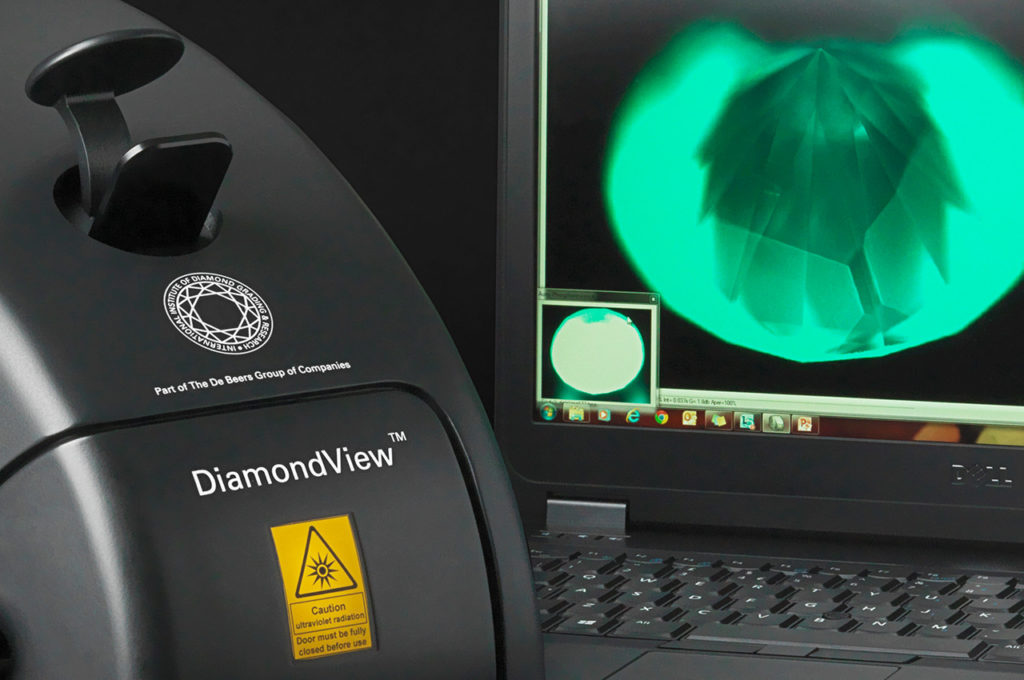
Image Credit: De Beers

Image Credit: De Beers
Summary
I have assessed and valued a fair number of synthetic diamonds over the last few years and there are basic gemmological tools to employ for detection of both HPHT and CVD, but they are not conclusive enough. Grading laboratories are now grading synthetic diamonds including IGI (International Gemmological Institute) and GIA (Gemmological Institute of America). A well equipped laboratory will have all the necessary advanced gemmological equipment to test HPHT grown diamonds and will include spectrometry, photoluminescence and X-ray fluorescence. For grading CVD diamonds, advanced equipment will include cathodoluminescence, spectroscopy and photoluminescence.
Opinion
Synthetic diamonds have been available for purchase through distributors over the last few years. It is estimated that the world diamond laboratory grown diamonds represent 2.5-3% of all diamonds on the market which will increase. There are issues that need addressing which is the synthetic production of small melee diamonds which are now being mixed with natural diamond and due to small mm sizes are challenging for testing. In addition, HPHT production will become obsolete in the years to come due to significant cost of high pressure heat chambers and energy required for growth of diamond. CVD will offer a more suitable option with the ability to increase production.
For further information, please contact me.

